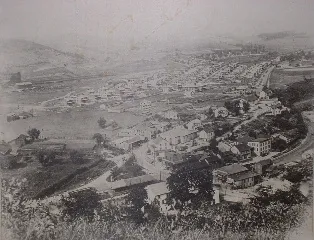Smock
In 1869, Samuel Smock, a wealthy farmer, blacksmith, and land speculator, purchased a two-story brick house and 190 acres of land from Jonathan Sharpless. During the 1880s and 1890s, Smock sold most of this property to coal companies, who developed the village's coal and coke history.
Several years later, when the Monongahela Division of the Pennsylvania Railroad moved through his property, Smock granted the railroad right-of-way with the stipulation that the railroad station be named after him. The train station, no longer in existence, was named Smock Station. This name was also applied to the village.
Smock's development as a mining town was unusual. Typically, one coal company developed and built mining towns in Southwestern Pennsylvania after 1880. The housing was architecturally uniform. Smock differs because it was developed into five architecturally distinct settlements by three coal companies and one individual.



